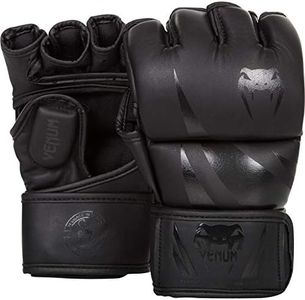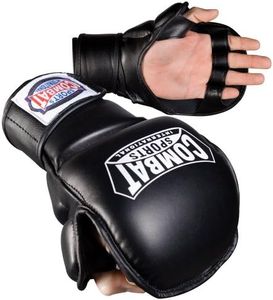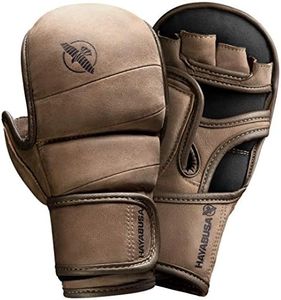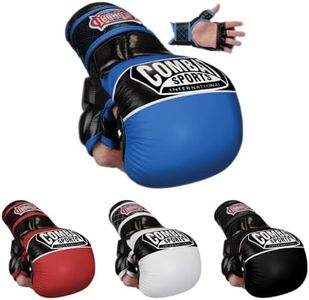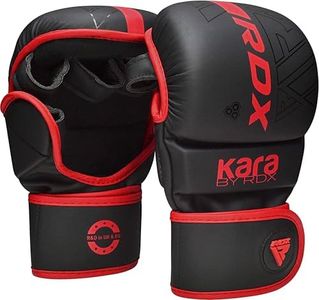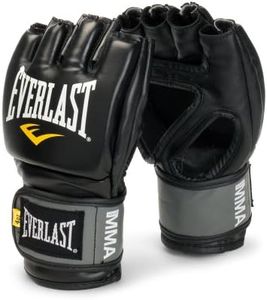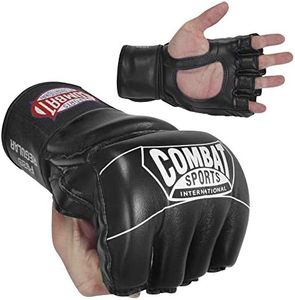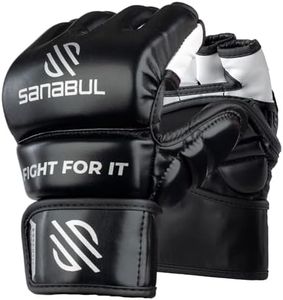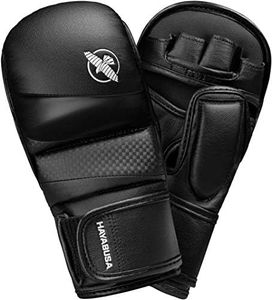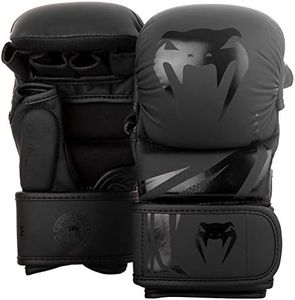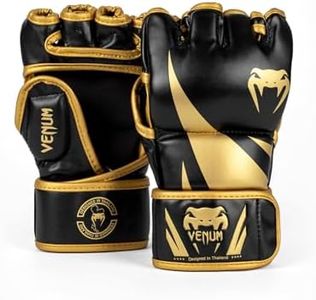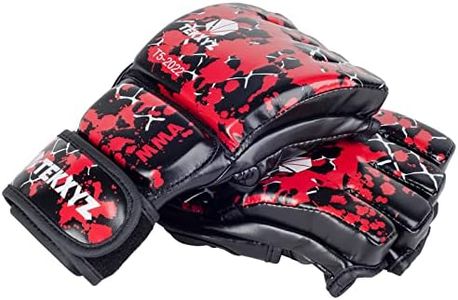We Use CookiesWe use cookies to enhance the security, performance,
functionality and for analytical and promotional activities. By continuing to browse this site you
are agreeing to our privacy policy
10 Best Mma Gloves
From leading brands and best sellers available on the web.Buying Guide for the Best Mma Gloves
Choosing the right MMA gloves can make a significant difference in both your performance and safety during training or competitions. It's important to find gloves that suit your intended use, fit comfortably on your hands, and provide enough protection for you and your training partners. By understanding key features and how they relate to your needs, you’ll be well-equipped to make a smart choice.Weight (Oz)The weight of MMA gloves is measured in ounces (oz) and directly affects the level of protection and mobility they offer. Lighter gloves (4-6 oz) are often used for competition because they allow for faster strikes and more precise grappling, but provide less padding. Heavier gloves (7 oz and above) are commonly used in training as they offer more knuckle and hand protection. Consider using lighter gloves if you’re preparing for a fight or competition, but opt for heavier gloves for general training and sparring to keep both you and your partner safe.
Padding and ProtectionPadding is the material that cushions the knuckles and hands, protecting both you and your sparring partners from injury. Thicker padding is preferable for beginners, frequent trainers, or those who spar regularly since it absorbs impact better and reduces the risk of injury. Advanced fighters may choose slimmer padding for more realistic competition experience. Think about your training intensity and partner safety when choosing how much padding is right for you.
Closure TypeClosure type refers to how the gloves are fastened on your wrist, typically with either hook-and-loop (Velcro) or lace-up systems. Velcro is much more convenient and allows for easy on/off, making it great for training and sparring. Lace-up closures provide a more secure fit and are often preferred in professional fights. If you train alone or switch gloves often, Velcro might be better. For maximum wrist support in high-level competition, consider lace-up.
Finger and Thumb DesignMMA gloves have open or segmented designs for the fingers and thumb to allow for grappling. Some gloves have more coverage for the thumb, while others leave it completely open for better mobility. Beginners might prefer gloves with more support to help prevent injury, while advanced users often choose gloves that maximize movement for techniques like submissions and clinching. Your training focus—striking versus grappling—should guide this choice.
Fit and SizingProper fit is crucial for comfort, movement, and protection. MMA gloves come in different sizes, usually small to extra-large, and may have adjustable straps. Gloves that are too tight may restrict movement or circulation, while loose ones can slip and offer less protection. Always measure your hand according to the manufacturer's suggestions and try on a few options if possible. If you mainly strike, a snug fit helps control punches. For grappling, slightly more room may be beneficial.
Material QualityMaterials used in MMA gloves affect durability, comfort, and breathability. Real leather is more durable and molds to your hand over time but requires more maintenance, while synthetic leather is easier to care for and generally more affordable. Inner lining material can also add to comfort and help wick away sweat. Think about how often you train and your preference for low or high maintenance gear when considering material.
